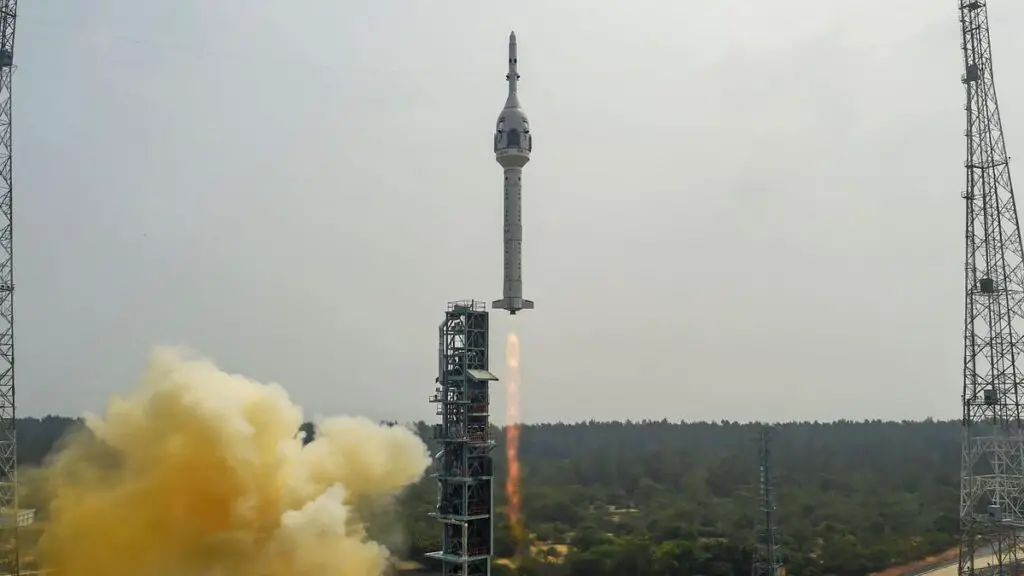ISRO’s TV-D1 Test Flight of Mission Gaganyaan Lifts Off Successfully
India’s space agency, ISRO, successfully launched the TV-D1 test flight of Mission Gaganyaan from the Satish Dhawan Space Station in Sriharikota on October 21, 2023. Despite a two-hour delay and initial engine ignition failure, ISRO scientists managed to launch the rocket carrying payloads related to crew safety. The primary goal of this mission was to achieve Crew Module and Crew Escape separation, and it was deemed a remarkable success.
The launch, however, was not without obstacles. Five seconds before liftoff, the ISRO had to hold the launch of Gaganyaan’s first Flight Test Vehicle Abort Mission-1 (TV-D1) due to an anomaly that was quickly identified and resolved. The TV-D1 flight was designed to demonstrate the performance of the Crew Escape System (CES) and was initially scheduled for 8 a.m. but rescheduled for 8:30 a.m.
The mission director initiated the automatic launch sequence at 8:30 a.m., and another lift-off reschedule was made for 8:45 a.m. Unfortunately, just five seconds before liftoff, the launch had to be called off. ISRO chief, S. Somanath, explained that the onboard computer postponed the launch due to an observed anomaly. He assured that the launch vehicle was safe, and the ISRO would carefully analyze the anomaly and schedule a new launch date in the near future.
Despite the initial setbacks, the rocket eventually lifted off at 10 a.m. and successfully deployed the payloads, which later splashed into the sea as planned. The achievement was met with jubilation from the ISRO team.
Speaking at a media briefing, ISRO Chairman S. Somanath expressed his delight at the successful accomplishment of the TV-D1 mission. He explained that the purpose of this mission was to demonstrate the effectiveness of the Crew Escape System for the Gaganyaan program. The vehicle reached a Mach number slightly above the speed of sound, initiating the abort condition for the Crew Escape System to function properly. The Crew Escape System successfully separated the crew module from the vehicle, and subsequent operations, including the touch-down at sea, were executed flawlessly.
ISRO Chairman Somanath commended the scientists for their exceptional work and expressed his satisfaction with the performance of the crew escape module. Mission Director S. Sivakumar described this mission as a groundbreaking endeavor, combining three experiments into one. The characteristics of all three systems were thoroughly tested and demonstrated in this mission, showcasing the incredible capabilities of ISRO’s technology.
The primary objective of this flight test vehicle abort mission was to evaluate the performance of the Crew Escape System as part of the Gaganyaan mission. The mission aimed to assess the various subsystems, separation systems, characteristics of the crew module, and deceleration systems at higher altitudes. Ultimately, it sought to ensure the safety and reliability of the Crew Escape System in case of an emergency that would necessitate the mission’s cancellation.
With the successful completion of the TV-D1 mission, ISRO has made significant progress towards the ambitious Gaganyaan mission and has proven its competence in critical space technologies. As the analysis of the anomaly continues, ISRO will soon announce a new launch date for the next stage of this groundbreaking mission.
[Source: ISRO]


